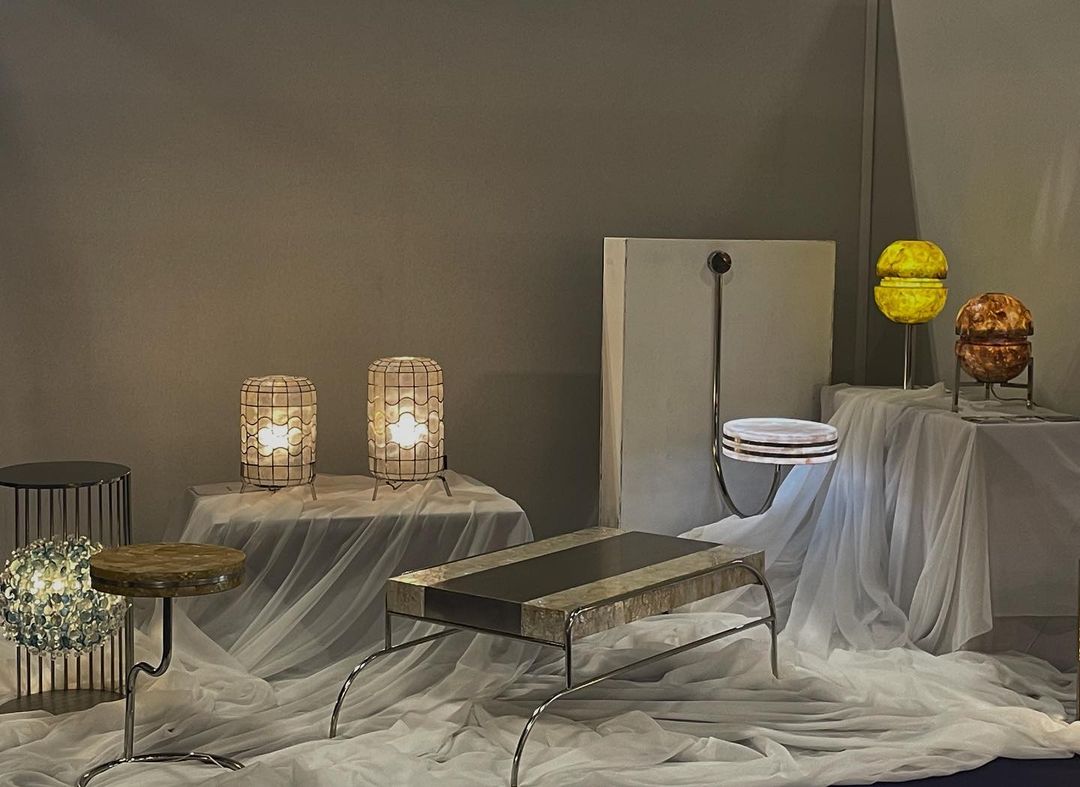Experimental design studio Senseware specializes in material manipulation, particularly of capiz and mother of pearl shells, exploring and testing the limits of what can be done with them.
Founded in 2022, Senseware is a three-person original design manufacturer comprised of founder and head of design Meyte Chan, principal designer Selene Placino, and principal architect Justin De Dios.
They are all De La Salle-College of Saint Benilde alumni, who met through mutual friends. Chan and Placino, both industrial designers, are in charge of designing objects, say a lamp, while design architect De Dios tinkers with the pragmatic side of making a lamp. That means researching technical aspects of lighting, making decisions on details like finishing, down to the smallest things like picturing how a lamp would stand.
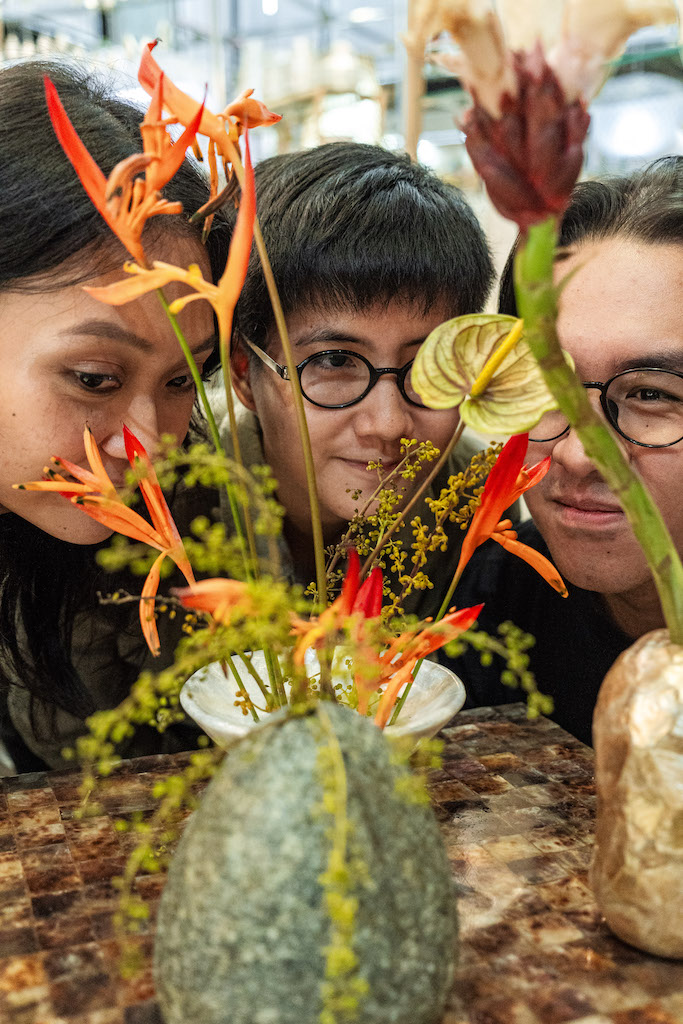
At the heart of Senseware is a commitment to seek and draw out the essence of materials. Their choice material is capiz. The shell comes from the bivalve marine mollusk windowpane oyster (Placuna placenta). It was predominantly used during the Spanish era as a precursor to glass in windows due to their translucence. For the same reason, it is also utilized in parol making. It, too, is highly favored as jewelry and ornaments due to its iridescent pearl-like sheen.
“A shell’s appearance varies based on the angle you are viewing it from,” Chan said. “Maybe on one side, your shell looks green, and on the other, it looks purple. Shell has that illusion.”
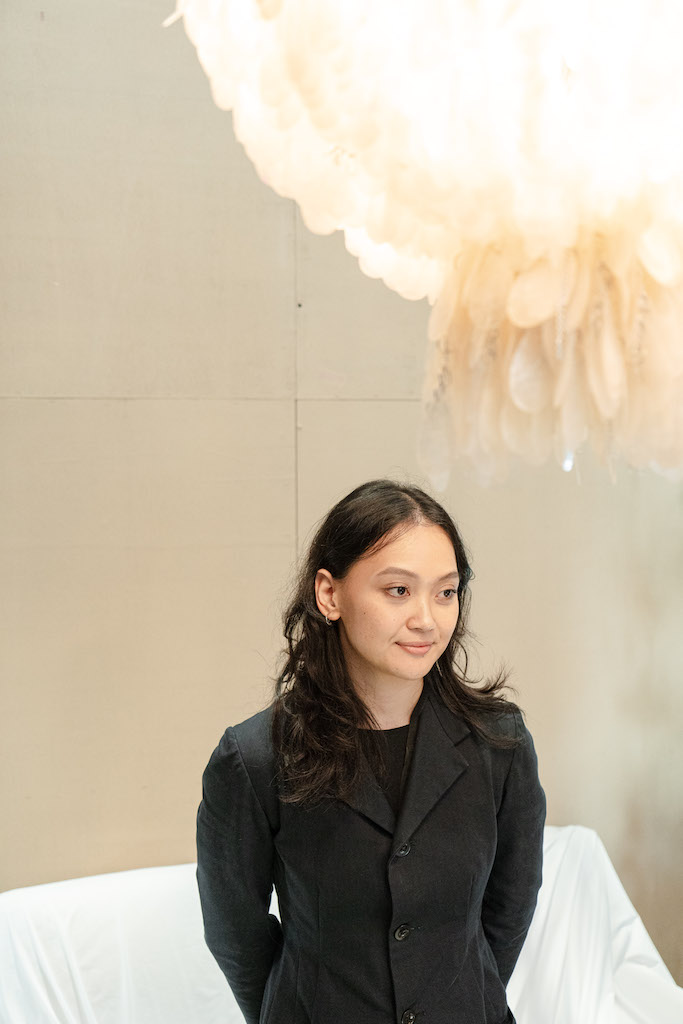
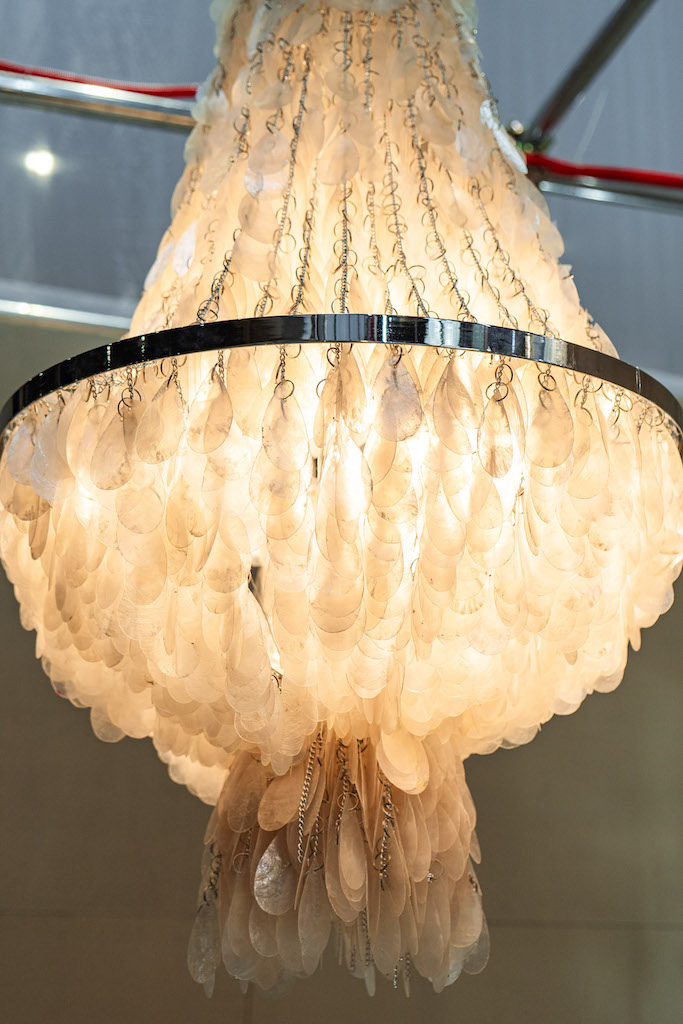
It is these properties that attracted her—a third-generation shell manufacturer—and most likely her ancestors to the business of turning capiz into all sorts of decorative stuff. The Chan family business, Shell Arts, has been around since the 1920s. It was originally owned by an American family before Chan’s grandmother decided to buy it in the 1980s.
When it was her turn to manage it, Chan found herself caught between two desires: keeping the business alive or leaving it behind to grow as an artist. After returning to the country from Australia, where she was raised, she realized she could do both. Enter Senseware.
Reviving a dying craft
Since its invention in the 16th century up until the 1990s, capiz had an illustrious run. At its peak, capiz was one of the country’s major fishery exports, raking in millions of dollars in gross domestic product annually. Its glimmer was only dimmed by the introduction of more modern materials like glass and a shortage in supply fueled by overharvesting due to increase in demand from Japanese and European markets. But capiz-rich provinces, particularly in Visayas, never stopped harvesting, shucking, polishing, and creating with these mollusks in hopes that one day capiz will regain its former glory.
Understanding capiz’s declining popularity only strengthened Chan’s belief in it: “It’s a dying craft. Shell is not what people want anymore and it’s not as popular as it once was. So for us, it’s all about showcasing it in a different light.”
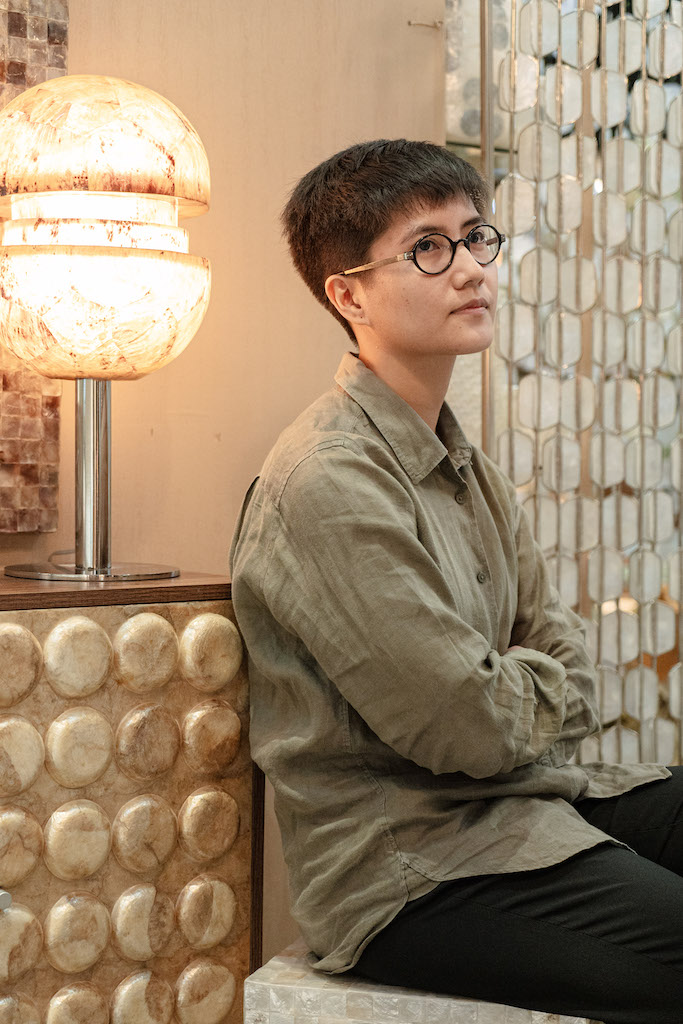
Using shells sourced from Lucena, Cebu, and other provinces, Senseware processes capiz in a family-owned factory in Dasmariñas, Cavite. The shell is porous, brittle, and delicate but through a technique artisans pioneered back in 1929, it is made more malleable.
Our direction represents our sensibilities rather than the sensibilities of what’s expected of a Filipino designer
Meyte Chan, Senseware
Part of this revival effort is creating pieces that combine the genteel sheen of capiz with unlikely materials like the cold rigidity of stainless steel and perhaps, unexpectedly—because it shares similar composition and uses with capiz—mother of pearl. Harder and more rigid, mother of pearl also known as nacre, is the organic–inorganic composite lining of pearl oysters, freshwater mussels, and abalone.
The difference in malleability between the two proved to be a challenge when processing them, Chan discovered. “A lot of what I know for capiz would not work with mother of pearl.” Nonetheless, she persisted.
Capiz comes out of the shell
The latest of Senseware’s experiments with capiz is “The Shadow of Shell,” an 11-piece collection that features capiz, mother of pearl, puca shells, and steel in various heterogenous iterations. It is also the design studio’s first foray into furniture that debuted at the bi-annual French interior design trade fair Maison et Objet in 2022. The idea, Chan explained, is to have two different materials (shell and steel) co-exist seamlessly, as a unified object indistinguishable from one another.
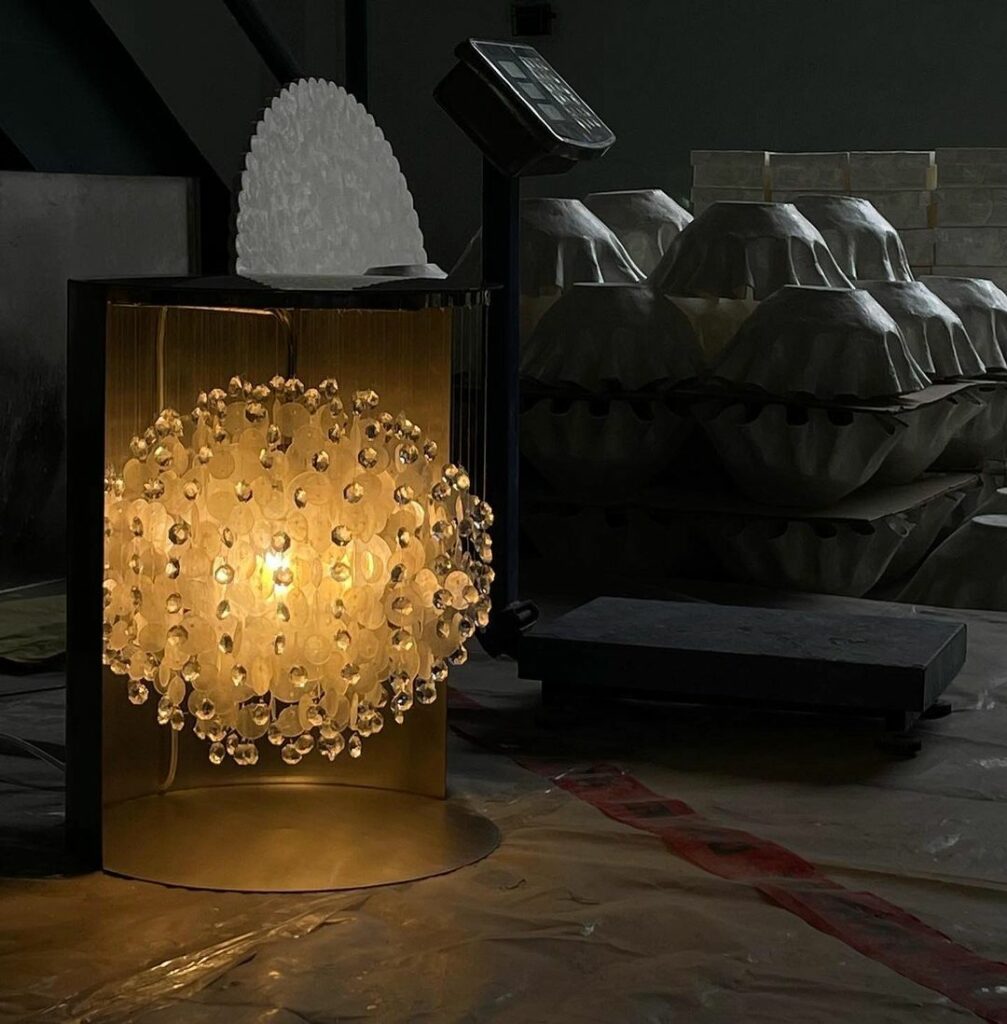
The name came from the 1995 Japanese anime film “Ghost in the Shell,” which is also the name of an empire capiz chandelier Chan designed. The objects in the collection, with their fluid shapes and organic forms, are heavily inspired by Japan’s metabolism movement that mimicked nature in designing megastructures.
Other inspirations for the collection came to Chan in the form of her architecture idols: the Japanese designer Shiro Kuramata (after whom a lacquered mother of pearl coffee table with curved stainless steel legs was named) and Danish designer Verner Panton (creator of the iconic Fun lamp, from which Chan’s version, Masaya lamp, an orb shell chandelier partially enclosed within a cylindrical steel structure, was born).
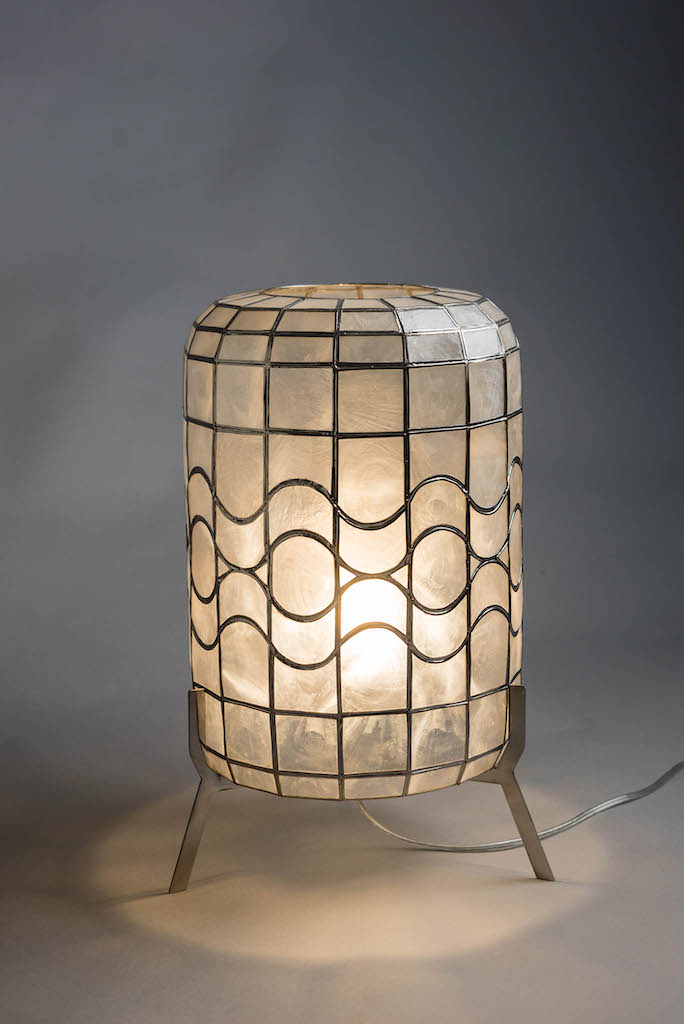
Placino, following Senseware’s new-found knack for metabolistic design, created two lamps: the Magma lamp that mimics the effervescent glow of volcanic lava and the Balud lamp that pays tribute to the traditional style of capiz binding.
“I noticed that the conventional approach to capiz binding typically involved using squares and straight lines,” Placino said. “To make the lamp truly distinctive, I decided to break away from the expected pattern and instead drew inspiration from the ocean’s waves, which is where the capiz shell originates.”
The complete range of objects from the collection along with designs from Chan’s family business was recently exhibited at Manila FAME, an annual trade fair organized by the Center for International Trade Expositions and Missions. The display of furniture on one end and functional everyday objects, from capiz bowls and plates to vases and vessels, on another offers a glimpse of Chan‘s and ultimately Senseware’s vision of seamlessly merging tradition with innovation.
Transcendental Filipino design
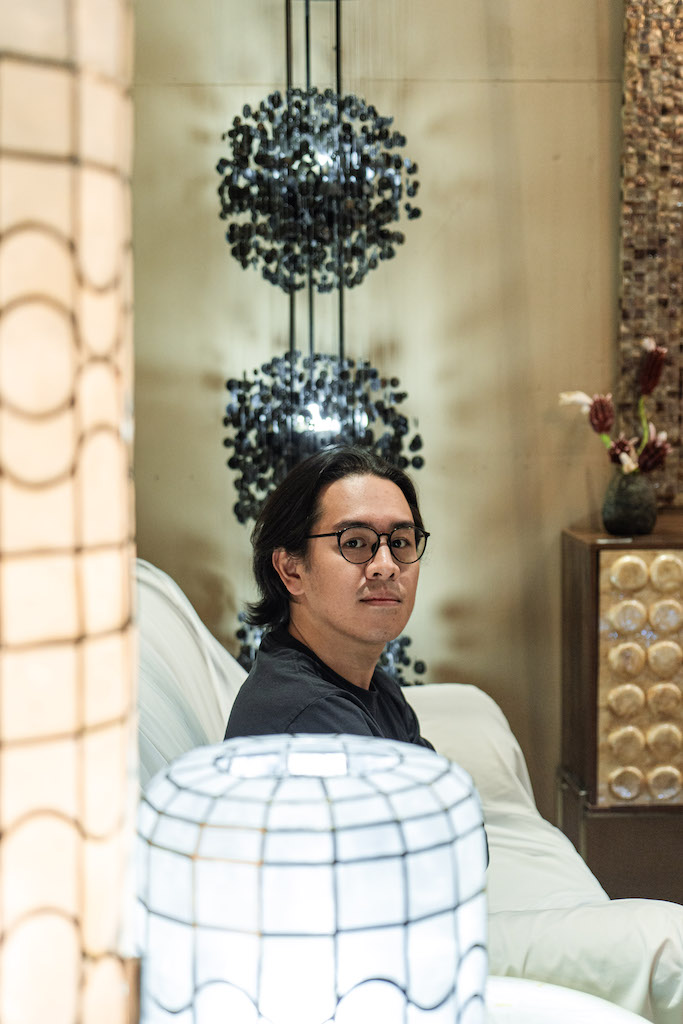
While capiz may be an indelible hallmark of Filipino architecture and design, Chan, Placino, and De Dios want to transcend the limits of what can be perceived as Filipino design.
“Our direction, the past year that we’ve been working together, represents our sensibilities rather than the sensibilities of what’s expected of a Filipino designer,” they said.
Part of Senseware’s advocacy is to come up with a “new Filipino aesthetic” beyond what they observed as a preoccupation with the “resort look.”
The trio also shares a desire to discover new ways of championing local materials in the image of their design. For De Dios, particularly, this requires going beyond the Filipino design vernacular because he believes staying within its bounds boxes their creativity.
Their first collection is just the beginning. “Everything is trial and error and for us,” said Chan. “It’s learning how to use our materials, how to see its beauty in its final form.”
Capiz was born during the 300-year colonization of the Spanish only to be drowned out in a wave of more modern materials centuries later. Some may argue that in that span of time all iterations must have been exhausted. That must have been it. But Senseware believes there’s still a lot they can do with the storied shell.


